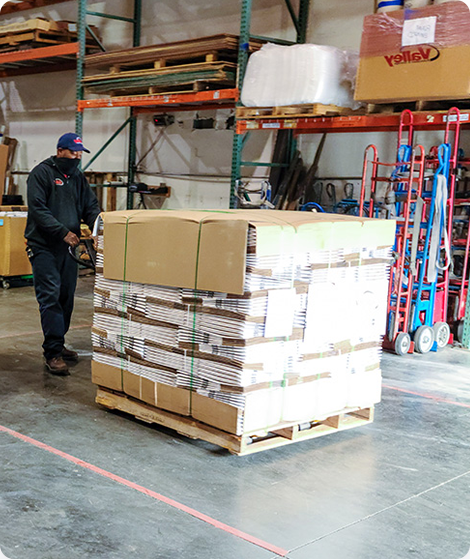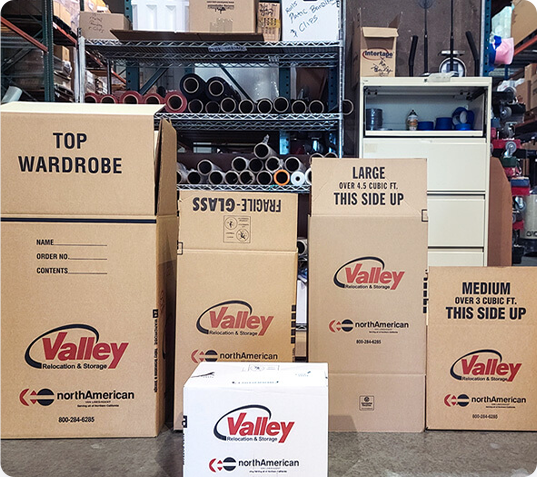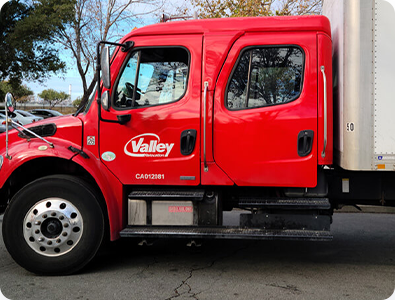Moving a business from one location to another, be it across town or the country, is no small feat. Commercial moving involves a complex orchestration of logistics, coordination, and strategic planning. The challenges that come with relocating a business are multifaceted, ranging from ensuring the safe transportation of delicate equipment to minimizing downtime and maintaining operational continuity.
Commercial moving, at its core, involves the relocation of businesses and their assets, encompassing everything from office furniture and IT infrastructure to inventory and machinery. The logistical complexities of such endeavors are heightened by the need for meticulous planning to mitigate disruptions to business operations. As companies navigate the challenges of commercial moves, one aspect stands out as a linchpin for success – efficient warehouse and storage services.
The importance of seamless storage solutions during commercial moves cannot be overstated. A well-thought-out storage strategy can make the difference between a smooth transition and a chaotic upheaval. It goes beyond merely finding a space to stow away items; it involves a strategic approach to inventory management, space optimization, and timely accessibility. In this blog, we will dissect the significance of warehouse and storage services, exploring the various dimensions that contribute to their efficiency in commercial moves.
As we embark on this exploration, we’ll uncover the artistry involved in the storage aspect of commercial moving. From understanding the landscape of the industry to maximizing efficiency through innovative technologies, our journey will provide valuable insights for businesses planning a move. In the subsequent sections, we’ll delve into the types of storage solutions available, strategies for optimizing storage space, and real-life case studies that illuminate successful commercial moves.
The Landscape of Commercial Moving and Storage Needs
Overview of the Commercial Moving Industry
The commercial moving industry is a dynamic and essential component of the business world, playing a pivotal role in the growth and adaptability of enterprises. As businesses evolve, expand, or streamline their operations, the need to relocate physical assets arises. This industry encompasses a wide range of services tailored to meet the unique demands of businesses in transition.
Commercial moves vary in scale and complexity, from small-scale office relocations to large-scale corporate overhauls involving intricate logistics and comprehensive planning. Professional moving companies specializing in commercial moves offer services that go beyond the transportation of goods. They often provide strategic planning, packing, unpacking, and, crucially, storage solutions to address the diverse needs of businesses undergoing change.
Typical Storage Needs During Commercial Moves

Storage needs form a fundamental aspect of commercial moves, serving as a bridge between the old and new locations. Understanding the nature of these storage requirements is crucial for businesses to ensure a smooth transition. Typical storage needs during commercial moves include:
Inventory Storage: Safeguarding a company’s inventory during a move is paramount. Storage facilities offer a secure space to house products, raw materials, and finished goods during the transition.
Office Furniture and Equipment: Large-scale office moves often involve the relocation of desks, chairs, computers, and other equipment. Temporary storage provides a safe haven for these items until the new workspace is ready.
Sensitive and Delicate Equipment: Businesses often have specialized equipment that requires careful handling. Climate-controlled storage is crucial for items sensitive to temperature and humidity fluctuations.
Archives and Documents: Many businesses need to store archives and important documents securely. Document storage solutions ensure that vital records are accessible when needed.
Challenges Faced in Storage and Warehousing
While storage is a critical component of commercial moves, it comes with its set of challenges. Addressing these challenges is essential for ensuring the safety and accessibility of items during the transition. Common challenges in storage and warehousing include:
Security Concerns: Protecting valuable assets from theft or damage is a top priority. Implementing robust security measures, such as surveillance systems and access controls, is crucial.
Space Optimization: Maximizing storage space while maintaining accessibility can be challenging. Efficient shelving systems and organizational strategies are key to overcoming this hurdle.
Timely Access: Businesses often need quick access to stored items during a move. Ensuring a streamlined process for retrieving items is essential to prevent operational disruptions.
Climate Control: Items sensitive to environmental conditions, such as electronics or delicate materials, require climate-controlled storage to prevent damage.
Understanding Warehouse and Storage Services
Types of Storage Solutions Available
Traditional Warehousing
Traditional warehousing is the cornerstone of storage solutions in the commercial moving landscape. These facilities are typically large, centralized spaces equipped to handle diverse storage needs. They offer ample square footage for businesses to store inventory, equipment, and other assets securely. Traditional warehouses are well-suited for businesses with extensive storage requirements and those seeking a centralized hub for their belongings during a move.
Portable Storage Units
Portable storage units provide a flexible and convenient alternative to traditional warehousing. These units are delivered directly to the business premises, allowing for on-site loading and unloading. Businesses can take advantage of the flexibility to pack at their own pace. Portable storage units are an excellent choice for businesses with fluctuating storage needs, offering a scalable solution that adapts to the evolving requirements of the commercial move.
Climate-Controlled Storage
Certain items, such as electronics, artwork, or sensitive documents, require specialized storage conditions. Climate-controlled storage facilities maintain a consistent temperature and humidity level, providing an environment that safeguards items from potential damage caused by extreme weather conditions. This option is indispensable for businesses dealing with delicate materials, ensuring the preservation of valuable assets during the storage phase of a commercial move.
Key Features of Efficient Storage Services

Security Measures
Security is paramount in storage services, especially when safeguarding valuable business assets. Efficient storage facilities employ a range of security measures, including:
Surveillance Systems: State-of-the-art surveillance cameras monitor the premises 24/7, deterring unauthorized access and providing a record of activities.
Access Controls: Restricted access ensures that only authorized personnel can enter storage areas, enhancing the overall security of stored items.
Security Personnel: On-site security personnel add an additional layer of protection, responding promptly to any security concerns.
Accessibility
Efficient storage services prioritize accessibility to ensure businesses can retrieve items as needed. Key features include:
Inventory Management Systems: Advanced systems track the location of each item within the storage facility, streamlining the retrieval process.
Well-Designed Layout: Thoughtful organization of storage units ensures easy navigation and quick access to stored items.
Flexible Access Hours: Storage facilities with extended or 24/7 access hours accommodate the diverse operational schedules of businesses.
Space Optimization
Making the most of available storage space is essential for efficient operations. Storage services employ various strategies for space optimization, such as:
Custom Shelving and Racking Systems: Tailored shelving solutions maximize vertical space, allowing for efficient organization and easy access.
Inventory Audits: Regular audits help businesses identify unused or redundant items, freeing up valuable storage space.
Dynamic Storage Solutions: Adaptable storage configurations accommodate changes in inventory volume and size, ensuring optimal space utilization.
Strategies for Maximizing Efficiency in Storage

Efficient storage management is critical in ensuring a successful and seamless commercial move. Implementing strategic inventory management, optimizing space utilization, and managing time effectively are key components to enhance storage efficiency. Let’s explore these strategies in more detail.
Inventory Management Techniques
Barcode Scanning
Barcode scanning revolutionizes inventory management during commercial moves. It provides a fast, accurate method for tracking and managing items in storage:
Ease of Tracking: Each item or box is labeled with a unique barcode. Scanning these barcodes allows for real-time tracking of items, reducing the chances of misplacement or loss.
Efficient Organization: By keeping a digital record of all items stored, barcode scanning helps in quickly locating items when needed, thus saving time and reducing manual errors.
Inventory Tracking Software
Inventory tracking software is essential for maintaining a clear overview of stored items:
Real-Time Updates: This software provides up-to-date information on inventory levels, location, and movement, facilitating better control over the storage process.
Data Insights: It offers valuable insights for decision-making, such as identifying redundant items, understanding usage patterns, and predicting future storage needs.
Space Utilization Strategies
Vertical Storage Solutions
Maximizing vertical space is a smart way to optimize storage:
High-Density Storage: Utilizing vertical space with tall shelving units can significantly increase storage capacity without requiring additional floor space.
Customized Solutions: Tailoring vertical storage solutions to fit specific item dimensions can further enhance space utilization.
Custom Shelving and Racking Systems
Custom shelving and racking systems are designed to fit the unique needs of a business’s inventory:
Adaptability: These systems can be adapted to accommodate various item sizes and weights, maximizing the efficiency of the storage space.
Accessibility: Strategic placement and design ensure easy access to frequently used items while storing less frequently used items in less accessible areas.
Time Management in Storage Operations
Streamlining Loading and Unloading Processes
Efficient loading and unloading are vital to minimize time wastage:
Pre-Planning: Organizing items based on their size, fragility, and frequency of use can streamline the process.
Efficient Workflow: Establishing a systematic approach for loading and unloading items reduces the time spent in these operations.
Coordinating Move Schedules with Storage Access
Synchronization of move schedules with storage facility access times is crucial:
Advance Planning: Coordinate with the storage facility to ensure access aligns with your moving schedule.
Flexibility: Choose a storage provider that offers flexible access hours to accommodate unexpected changes in your moving schedule.
By employing these strategies, businesses can significantly enhance the efficiency of their storage operations during commercial moves.
Choosing the Right Storage Service for Your Commercial Move

Selecting the appropriate storage service is a pivotal decision in the commercial moving process. The right choice can streamline your move, safeguard your assets, and ultimately save your business time and money. When evaluating potential storage providers, consider several key factors to ensure that the service aligns with your specific needs.
Factors to Consider When Selecting a Storage Provider
Size and Type of Goods
Different types of goods require different storage solutions. Consider the following:
Volume and Physical Size: Assess the amount and size of your items. If you have large quantities or oversized items, look for a storage provider with ample space and specialized storage options.
Fragility and Special Requirements: Fragile items, such as electronic equipment or delicate furniture, may require climate-controlled storage or additional protective measures.
Duration of Storage
The length of time you plan to store your items can significantly influence your choice:
Short-Term vs. Long-Term: Short-term storage might be more flexible and cost-effective, while long-term storage options could offer better rates for extended periods.
Access Frequency: Consider how often you’ll need to access your stored items. Some storage services offer more flexibility for frequent access, which might be necessary for longer storage durations.
Budget Constraints
Budget is always a crucial factor:
Cost Analysis: Obtain detailed quotes from several providers. Be mindful of any additional fees, such as for access, security, or special handling.
Value for Money: The cheapest option isn’t always the best. Weigh the costs against the services and protections offered.
Tips for Evaluating and Comparing Storage Services
Research and Reviews
Online Reviews and Testimonials: These can provide insights into customer satisfaction and the reliability of the storage service.
Industry Reputation: A provider with a strong reputation in the industry is often a good indicator of quality and reliability.
Security and Safety Features
Security Measures: Ensure the facility has robust security measures, such as surveillance cameras, secure access, and on-site guards.
Safety Protocols: Check for fire safety measures, pest control, and other protocols that protect the integrity of your items.
Visit the Facility
Inspection: A personal visit to the storage facility can provide a clear picture of the space, security, and the level of maintenance.
Staff Interaction: Engaging with the staff can give you an idea of the level of service and professionalism you can expect.
Service Flexibility and Accessibility
Access Hours: Ensure the facility’s access hours align with your needs.
Flexibility: Look for providers that offer flexibility in terms of scaling up or down your storage space as your requirements change.
Agreement and Insurance
Read the Fine Print: Understand the terms and conditions of the storage agreement, including any liabilities and responsibilities.
Insurance Coverage: Ensure your goods will be covered under insurance while in storage, either through the provider or your own policy.
Hire Valley Relocation for High-Quality Warehouse and Storage Solutions!
Valley Relocation is a well-known professional moving company that has been helping companies move from one location to another in Sacramento for over four decades. We offer a range of moving services that include warehouse and storage services, facility services, specialized transportation, and more.
To get a free site survey or to understand the complexity of our services, you can get in touch with us today!






